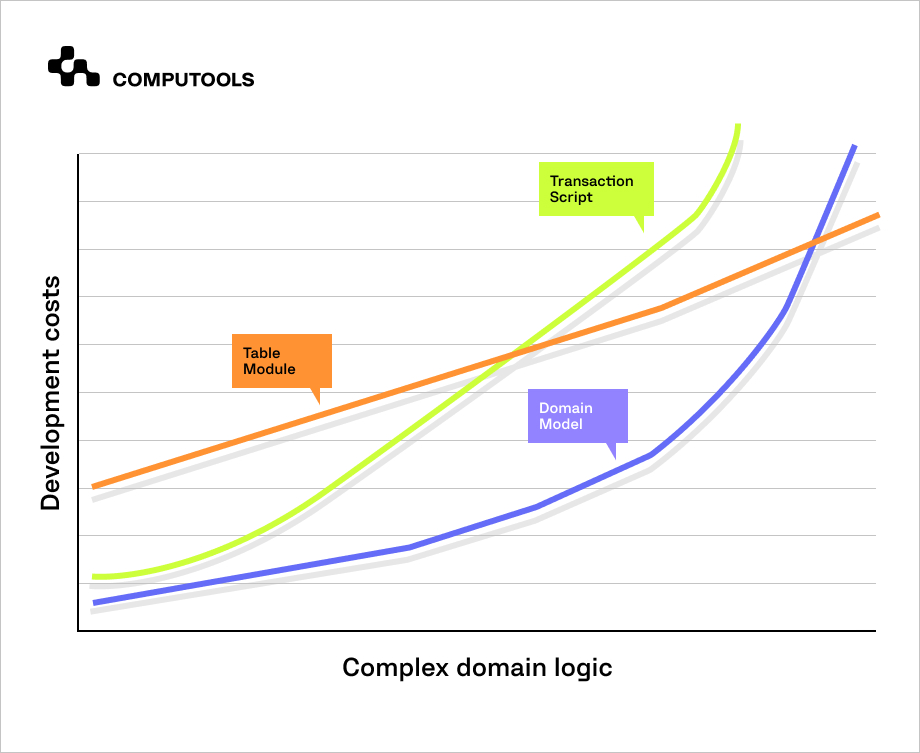In the field of software development, there is no single view on software architecture because theoretical debates on the difference between design and development still continue. This article, however, is not focused on theoretical aspects of software design but rather on its practical matters. The choice of architecture is essential for both the Product Owner and the Solution Architect; the Product Owner is supposed to guide the Solution Architect in the most optimal direction for project implementation, whereas the Solution Architect is expected to ensure a good development speed within the team. Before getting to the point, it is worth noting that there is no silver bullet and one-size-fits-all architecture pattern to apply to all projects successfully. You should always keep in mind the terms and limitations of every single project.
This article is meant to help non-technical managers understand the role of architecture in software design and how to choose the most optimal architecture pattern in solution-type projects.
What Is Infrastructure?
Many technical specialists and managers confuse the notion of architecture with the concept of infrastructure. This misconception is often a reason behind some bad decision-making during project development. So, let’s clear this up.
The infrastructure above all enables technical interactions between system modules, the outside sources, and the system itself and ensures horizontal and vertical system scalability. In particular, the infrastructure includes cluster configuration, technical interoperability between microservices (including the majority of interaction patterns between them), queue configuration, etc. The implementation of infrastructure is critical in meeting the requirements for responsiveness, fault tolerance, and the cost of server capacities needed to provide the solution’s workability. It is not hard for the Product Owner to guide their team on infrastructure issues (as they are easily converted into requirements) in comparison to architecture matters. Besides, infrastructure decisions are easier to change, even though such changes might result in extra costs.
Basic Architecture Goals
There are a few reasons why it is important to develop software architecture. Its primary purpose is to help a team of developers work within their maximum efficiency. The role of architecture is to establish a good development speed in the first place. The system performance, the cost of server capacities, and business-related decision-making are viewed as minor factors that affect software architecture to a lesser degree.
In my experience, non-optimal software architecture can be offset. For example, timelines can get longer, requiring more expertise from developers, QA engineers, DevOps, etc., while non-functional requirements can be delivered through infrastructure solutions. However, might also entail new restrictions imposed by architecture.
Key Factors in the Development Speed
Let’s look at the key factors in the speed of development more closely:
– the speed at which new workable functionality, including debugging, is developed within one iteration;
– the speed of implementing changes in existing functionality, including debugging, is developed within one iteration;
– the change in the development speed that occurs along with project implementation;
– the time a system user with relevant expertise takes to start working on the project;
– the time the average developer will take to get the hang of the system;
– the decrease in the team’s performance with every new team member added to it;
– the development team’s maximum size.
The development speed is measured in man-hours used, which helps calculate the cost of the development team’s work (here, the cost of server capacities and other elements are not reflected).
Another essential property of software is its adjustability and predictability. Say, if one specific solution is fit for your project at this point in time, you should still plan its further development and establish a safety margin. Otherwise, you risk increasing the cost of software development substantially or face the need to redo everything from scratch.
Similarly, the success of long-term projects depends on the team’s scalability rather than on the development speed. Providing a good environment for external and internal team interactions will take you more time and resources, eventually reducing the performance of each team involved. For instance, the service (or microservice) development approach is aimed at giving the possibility to efficiently use a large number of development teams (one team for every service).
Configuration Settings for the Best-Fit Project Solution
Some configuration settings can have bottlenecks or limitations. Say, if we use an architecture pattern that maximizes the development speed of new functionality from the very start, we are likely to be in the situation where the software development process becomes infeasible due to a slow-down in the project management dynamics. Similarly, quick architectural solutions impede the team’s scalability, e.g., adding a new team member will only lead to a further slow-down in project implementation.

The graph above shows the dependency between the cost of software development and the choice of a software architectural pattern.
Optimal configuration settings for software architecture are commonly the ones enabling the team to develop, maintain, and update the software product throughout its life-cycle at minimal costs and as fast as possible. Since most architectural decisions also affect the business value of the software product, the Product Owner should deliver relevant information and define the priorities to consider in architecture development. It is essential to highlight that the Solution Architect’s expertise is as important as the timely preparation of the latest data and information for the project.
This set of parameters can be the fundamentals in an architect’s work on architecture patterns and approaches:
– domain knowledge, potential difficulties, and high-level product requirements;
– team size(s) and collective expertise;
– expected pace of team scalability;
– expected project life-cycle, including improvement and maintenance;
– deadline and budget at the current stage;
– requirements for threshold loads and speed;
– information on available human resources;
– risks of staff turnover.
These are the main parameters that need to be balanced in software architecture:
– the development speed in the current iteration with the possibility of product scalability;
– a single developer’s performance in relation to speed and opportunities for team scalability;
– the focus on unique project needs or available tech talents.
For further inquiry
Building custom software solutions takes more than just a team of smart programmers. The role of Solution Architects, Team Leads, and Project Managers has the same importance and impact on the end results. If you are looking for full-cycle software development services, message Computools’s experts via info@computool.com to get more information on which tech talents are best to hire for your project implementation.

Computools
Software Solutions
Computools is a digital consulting and software development company that delivers innovative solutions to help businesses unlock tomorrow.









“Computools was selected through an RFP process. They were shortlisted and selected from between 5 other suppliers. Computools has worked thoroughly and timely to solve all security issues and launch as agreed. Their expertise is impressive.”